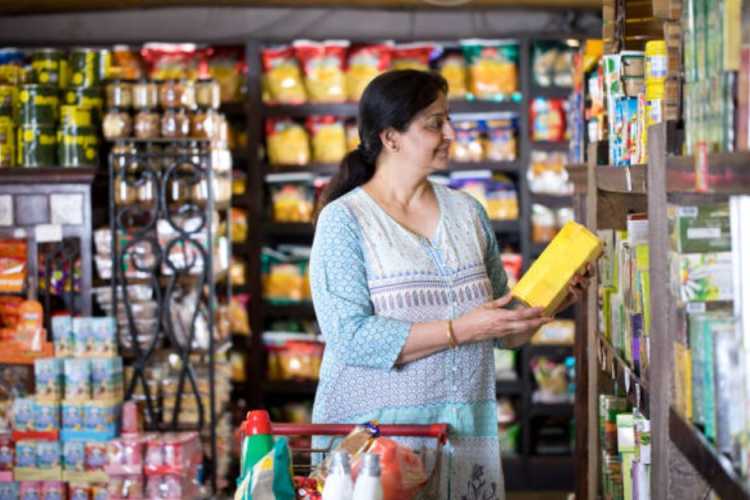
This Navratri, the government has promised households relief with the launch of GST 2.0 on September 22. Companies have rushed to social media to announce rate cuts on daily use items ranging from milk and clothing to cars. The government has christened it a Bachat Utsav—a festival of savings. The larger question, however, is whether these tax cuts will translate into lower prices for consumers or remain a public-relations exercise.
The overhaul replaces the earlier four-tier GST structure of 5%, 12%, 18% and 28% with just two main slabs of 5% and 18%. Ultra-luxury and sin goods will attract a steep 40%. Essentials like food grains, medicines, basic dairy products and educational items are now taxed at 5%. Most goods and services — including manufacturing, transport and consumer services — are taxed at 18%. A wide range of products such as UHT milk, chapati, paratha and parotta now face zero tax, while butter, ghee, paneer and cheese have moved to the 5% bracket.
READ | India’s tax collections surge rests on middle class strain
Winners and losers
The changes have produced immediate winners. FMCG giants like Amul have cut prices across 700 products, while global brands such as Uniqlo have slashed tags on several items. Automakers have also moved quickly: Toyota has trimmed Rs 3.34 lakh off its Legender SUV, while Maruti, Tata and Hyundai have announced price cuts of up to Rs 2.40 lakh. Even luxury carmakers Mercedes-Benz and BMW have joined the trend. Consumer goods companies like HUL, P&G and Emami have pledged to pass on benefits.
But some products will cost more. Cigarettes, gutkha, pan masala and aerated drinks now face a 40% GST. Coal has shifted from 5% to 18%, raising input costs for energy-intensive industries. Large bikes and premium cars too will pay the 40% rate.
Two faces of India’s consumption
The reform comes at a delicate moment. India’s consumption story has always been a tale of two economies. On the one hand, an affluent segment spends freely on luxury goods, fuelling bullish stock market narratives of unstoppable consumption growth. Analysts point to demographics and rising incomes as evidence that consumption will keep rising as it did in the boom years from 2010 to 2025.
On the other hand, since 2024, macroeconomic data have told a different story. Private final consumption expenditure has grown more slowly than GDP. The labour market remains weak, with job creation failing to match population growth. Middle class wages are stagnant, and much of household spending is driven by government welfare rather than income gains. It is this fragile consumption base that policymakers hope GST 2.0 can support.
Will benefits reach consumers
The success of the reform depends on whether lower tax rates are passed through to consumers. Past experience offers caution. During the GST reshuffle of 2018-19, surveys found that manufacturers and retailers often absorbed tax cuts instead of lowering sticker prices. A recent LocalCircles poll shows consumers still harbour doubts.
Experts argue that unless there is strong monitoring and enforcement, businesses may again pocket savings. The National Anti-Profiteering Authority, set up during the initial GST rollout to ensure pass-through, has had limited success and now faces calls for revival or replacement. Without such oversight, the Bachat Utsav risks becoming little more than a slogan.
Implications for MSMEs
For small traders and MSMEs, the reforms may offer structural relief but not without caveats. The simplification of slabs reduces classification disputes, but longstanding irritants remain. Delayed refunds, blocked input tax credits and glitches in the GST portal continue to frustrate businesses. Lessons from the 2017 rollout are instructive: GST eliminated cascading taxes and formalised large swathes of the economy, but also burdened firms with compliance costs that eased only after repeated course corrections.
GST 2.0 could, in theory, streamline compliance. But implementation will require robust IT systems, faster refund cycles, and better Centre-state coordination. Without these, the relief may remain more cosmetic than substantive.
The road ahead
The new GST package is neither a panacea nor a hollow gesture. It opens the door to lower prices and simpler compliance, but outcomes will hinge on three factors: how faithfully businesses pass on tax savings, how quickly governments address operational frictions, and how consistently states apply rules.
If treated as the beginning of an implementation-focused reform rather than a one-time political package, GST 2.0 could yet deliver on the original promise of a unified, efficient indirect tax. For now, consumers are beginning to see small but visible savings in their bills. Whether these become lasting gains will depend on the government’s ability to turn festive slogans into durable reform.
